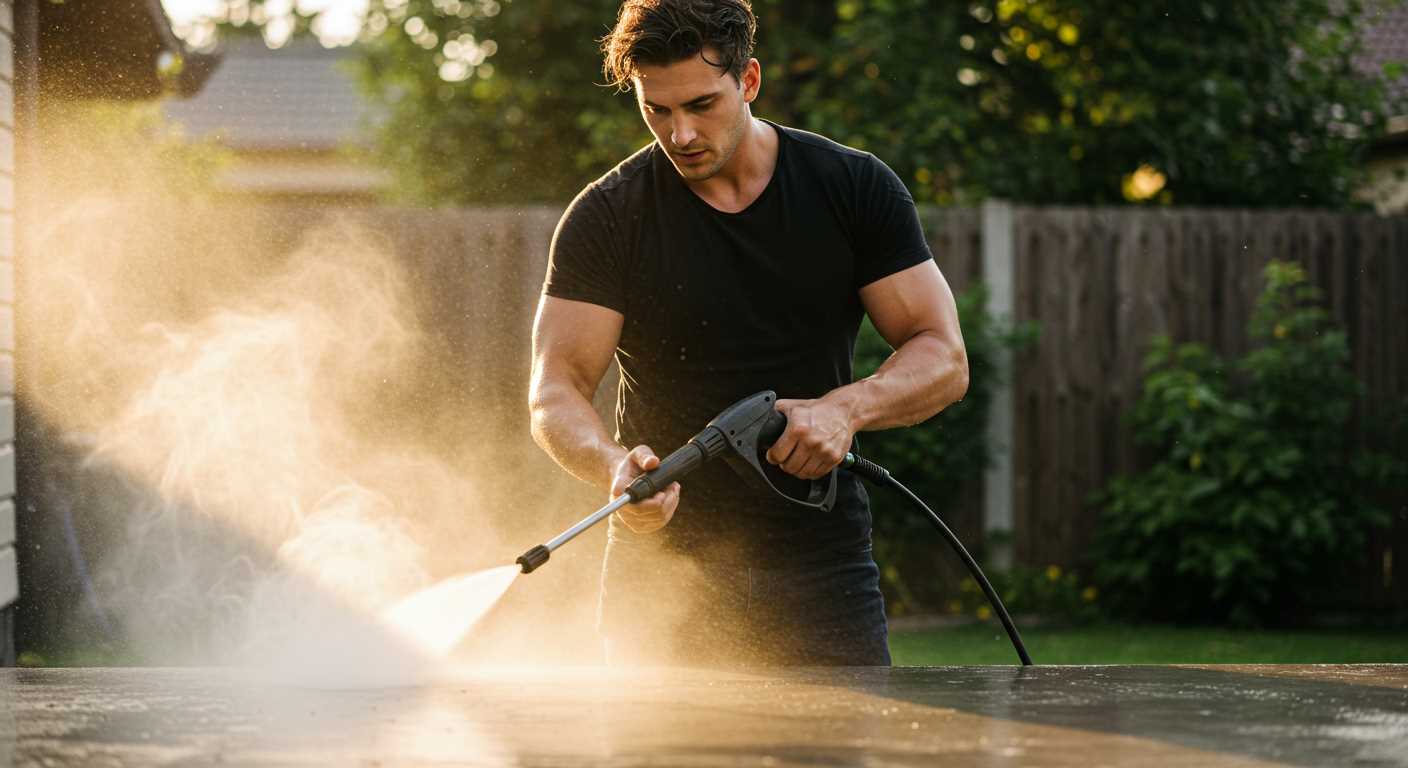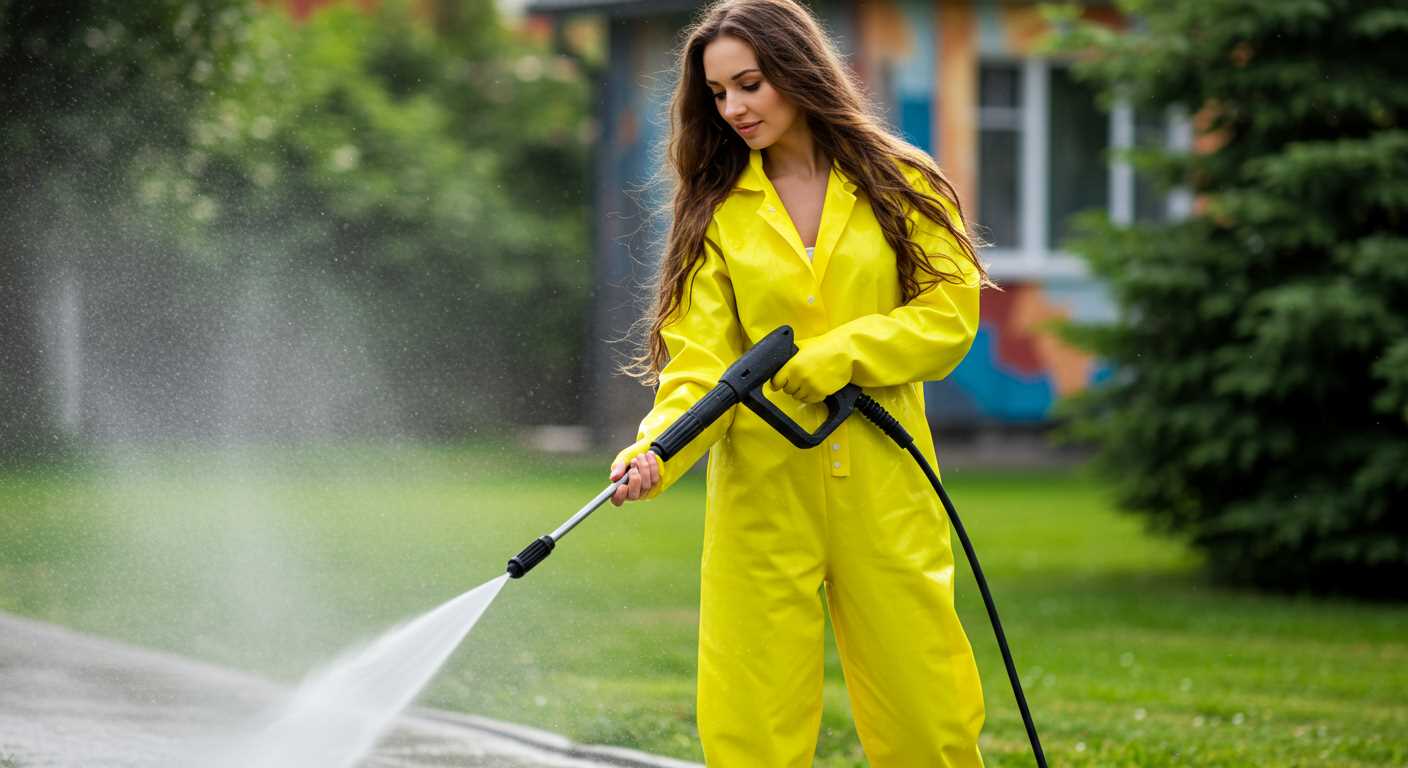



Disassemble the unit carefully, ensuring you have all the necessary tools at hand. Each component, from the nozzle to the detergent tank, requires special attention. Clean the filter and water intake frequently to prevent blockages that can hinder performance. A simple rinse in warm water often suffices, but stubborn debris may require a soft brush.
Next, focus on the pump system. A dedicated pump cleaner can significantly enhance the lifespan of the machinery. It’s advisable to use a mixture of water and a specialised pump cleaner, running the mixture through the system for about 10 minutes. This practice removes any residues that accumulate over time and keeps the components in optimum condition.
Don’t overlook the high-pressure hose. Inspect it for kinks or damage that can lead to leaks or reduced pressure. If you spot any wear, replace it immediately to ensure safety during operation. Regular checks of the spray gun and nozzle are equally vital. A clogged nozzle can disrupt the flow of water, so giving it a clean with a pin or a similar object will maintain the right pressure and spray pattern.
Finally, after every use, empty and rinse the detergent tank. Leftover soap can harden and create blockages. A quick rinse with warm water will do the trick. By adopting these maintenance routines, you ensure that your unit remains effective and ready for the next cleaning task.
Procedure for Maintaining Your Cleaning Device

The first step involves disconnecting all hoses and power sources to ensure safety. Rinse the external casing with clean water to remove any loose debris.
Next, use a mixture of warm water and a mild detergent for scrubbing the exterior. A soft cloth or sponge works well; avoid abrasive materials that could scratch the surface.
Inspect each nozzle thoroughly. If there are blockages, remove the nozzle and use a thin wire or needle to clear them. Rinse the nozzle under warm water to ensure all debris is dislodged.
For any components that are removable, such as filters or detergent tanks, take them out and rinse them under running water. If necessary, soak them in soapy water for a few minutes before scrubbing gently with a soft brush.
Once everything is rinsed and clean, let the parts dry completely before reassembling. Ensure that seals and connections are free of debris to avoid leaks. After reassembly, test with a short burst of water to check for proper function.
Lastly, store the equipment in a dry location, preferably covered, to protect it from moisture and elements. Regular maintenance after each use prolongs the lifespan of your equipment.
Gather Necessary Cleaning Supplies
Begin by assembling the right materials for optimal results. This involves gathering a few specific items that will facilitate thorough maintenance of your cleaning apparatus.
Essential Tools
Consider the following tools:
- Soft-bristle brush
- Microfibre cloths
- Bucket
- Garden hose
Cleaning Agents
Acquire suitable cleaning solutions:
| Type | Purpose |
|---|---|
| Detergent | For removing grime and stains |
| Degreaser | Effective for oil and grease |
| White vinegar | Natural disinfectant and deodoriser |
With these supplies at hand, you will be well-prepared to maintain your equipment efficiently. The preparation will greatly enhance the longevity of your device and ensure it functions at its best.
Inspect and Prepare the Pressure Cleaner
Conduct a thorough examination of the entire unit, beginning with the motor and electrical connections. Ensure no visible wear, damage, or frayed cords. Tighten any loose components to eliminate vibrations during operation.
Next, assess the hoses for cracks, kinks, or leaks. It’s critical that they are intact to maintain optimal flow and pressure. Replace any damaged hoses immediately to prevent further issues.
Check the nozzle for blockages. Use a wire or a small pin to clear any debris that might obstruct the spray pattern. Maintaining the nozzle is essential for achieving desired results during use.
Inspect the detergent tank or compartment as well. Clean any residue from previous use to avoid cross-contamination of cleaning solutions. This will ensure that the next task’s cleaning agents work effectively.
Review the owner’s manual for any model-specific recommendations. Some engines require particular checks, such as oil and filter replacements, which can enhance performance and longevity.
Finally, ensure that the unit is on a stable surface during operation. This prevents tipping and potential damage. Preparing the area is just as important as the equipment itself.
Remove and Clean the Nozzle
Detach the nozzle carefully from the lance. Use a wrench or pliers, if necessary, ensuring you do not damage the components. Once removed, inspect the nozzle for clogs or blockages.
Cleaning Procedure
.jpg)
- Flush the nozzle under warm water to dislodge debris.
- If stubborn blockages remain, soak the nozzle in a solution of vinegar and water for 30 minutes.
- Use a soft brush or a toothpick to clear any remaining particles.
- Rinse thoroughly and ensure there are no residues left.
Verify the nozzle’s functionality by running water through it briefly. This helps ensure optimal performance once reattached.
Reattaching the Nozzle
- Align the nozzle back onto the lance, ensuring a snug fit.
- Tighten gently, taking care not to overdo it, as this can lead to damage.
Finally, test the equipment at a low setting to ensure everything is working correctly. A well-maintained nozzle can significantly improve the effectiveness of your machine.
Flush the Water Supply System
To ensure optimal performance, it’s essential to thoroughly flush the water supply pathways. Begin by disconnecting any hoses attached to the inlet. This allows for unobstructed access to the system. Open the water source and let it flow freely for a few minutes to remove any debris or sediment. Check the water clarity; if it appears discoloured, continue flushing until clean water flows consistently.
Next, inspect the inlet strainer or filter for accumulation of particles. Clean or replace it as necessary. This component safeguards the internal parts from clogging and damage. Once the inlet is clear, reconnect the hoses securely to prevent leaks.
Before finalising the setup, I recommend running the unit for a short duration without the nozzle attached. This step helps to expel any remaining contaminants and check for proper water flow throughout the system. Always ensure that the connections are tight, as loose fittings can lead to performance issues.
Regular maintenance of the water supply system can greatly extend the life of your equipment and enhance its operational efficiency.
Clean the Filter and Strainer

Start by detaching the filter and strainer from the water inlet. Typically, these components are located at the base of the unit where the water supply connects. Use a wrench or pliers for assistance if needed, but be cautious to avoid damaging any attachments.
Next, rinse the filter and strainer under warm water to eliminate dirt and debris. If the blockage is stubborn, a soft brush can help dislodge any remaining particles. Avoid using harsh chemicals as they may damage the components.
Inspect for Damage
After rinsing, closely examine the filter and strainer for any signs of wear or damage such as cracks or significant corrosion. If the integrity of either part is compromised, replacement is necessary to ensure optimal performance.
Reinstallation
Once thoroughly cleaned and inspected, reattach the filter and strainer carefully. Ensure a snug fit to prevent leaks during operation. Double-check that all connections are secure before powering up the machine again.
Regular maintenance of these parts can significantly enhance the functionality and longevity of the equipment. Make this task a part of your routine to achieve better results in your cleaning projects.
Wipe Down the Exterior Components

Use a soft cloth or sponge soaked in warm, soapy water to wipe the housing and other exterior parts. This approach helps eliminate dirt and grime effectively. Pay close attention to crevices and control panels, ensuring no residue remains that might cause sticking or malfunction.
Avoid abrasive pads, as they can scratch the surfaces. For stubborn spots, a mild degreaser is suitable when mixed with water. After applying, let it sit for a few minutes before wiping down for better results.
Ensure that all electrical components, such as switches and connections, are kept dry during this process. A dry cloth should follow any wet cleaning method to remove excess moisture, thereby preventing rust and corrosion.
Finish by inspecting the area around the motor and wheels, as debris can accumulate here. Remove any stuck dirt or foreign objects carefully to maintain functionality. This attention to detail contributes to the longevity of your unit.
Store the Pressure Cleaning Equipment Properly
After thorough maintenance, the way I store my cleaning setup significantly influences its longevity. Follow these steps to ensure optimal storage conditions.
- Choose a dry and cool place, away from direct sunlight and extreme temperatures. Ideal conditions prolong the life of all components.
- Disconnect all hoses and accessories to prevent kinks and damage. Store them separately to maximise their durability.
- Use protective caps on nozzles and inlets to keep debris out during storage. This minor step can save time later when you need to use the equipment.
- For electric models, wrap the power cord neatly to avoid tangles. Consider using Velcro straps or cord wraps designed for this purpose.
- Store the device upright if possible. If space allows, a dedicated storage rack can keep everything organised and secure.
- Periodic checks during storage are beneficial. Inspect for leaks or deteriorating components, allowing for timely repairs.
By adhering to these recommendations, I ensure my cleaning equipment remains in excellent condition, ready for future tasks with optimal performance.







